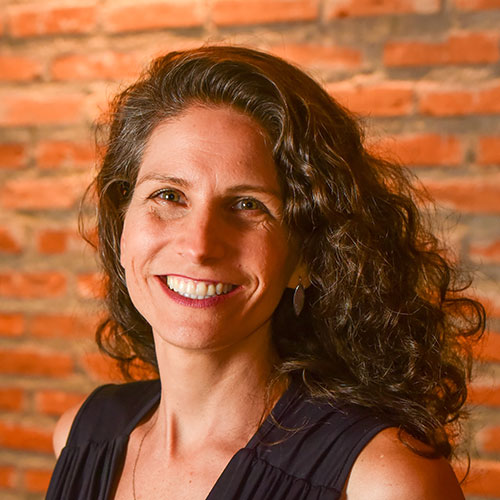Agroecology and indigenous wisdom recover degraded areas of the Terena people
Led by indigenous people, Caianas organization promotes environmental education and food security in Miranda, Mato Grosso do Sul.
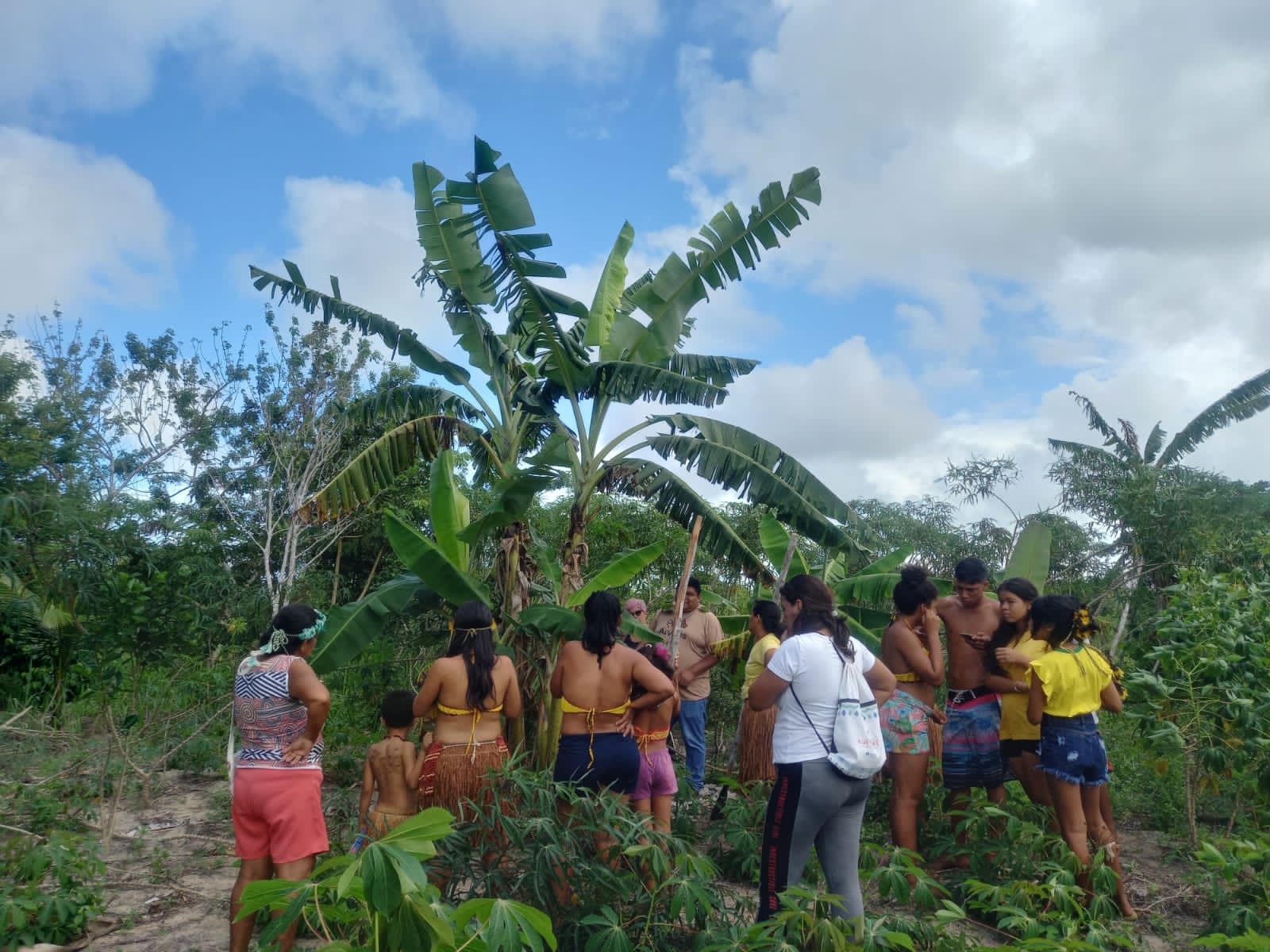

The way in which the Terena people cultivated their land was profoundly changed with the advance of intensive livestock farming in the region of Miranda, Mato Grosso do Sul. In addition to livestock, monocultures of sugar cane and, more recently, soybeans have been transforming the landscape throughout the state. In an attempt to reverse this scenario, the Terenas of the Cachoeirinha Indigenous Land began to use agroecology techniques, with important agricultural and environmental results.
Through creole seeds and ancestral knowledge, they have already recovered around 30 hectares of degraded land near the Pantanal. The success is due to the planting of trees combined with the production of roots, grains, vegetables and flowers, all in the same space and organically, without the use of pesticides.
The practice enriches the soil and protects water sources. It also promotes agricultural diversity, which guarantees autonomy and food security. In this process, several varieties of edible plants that had been forgotten over time were once again cultivated. As a result, old traditional eating habits were also re-established, improving the health of the local population.
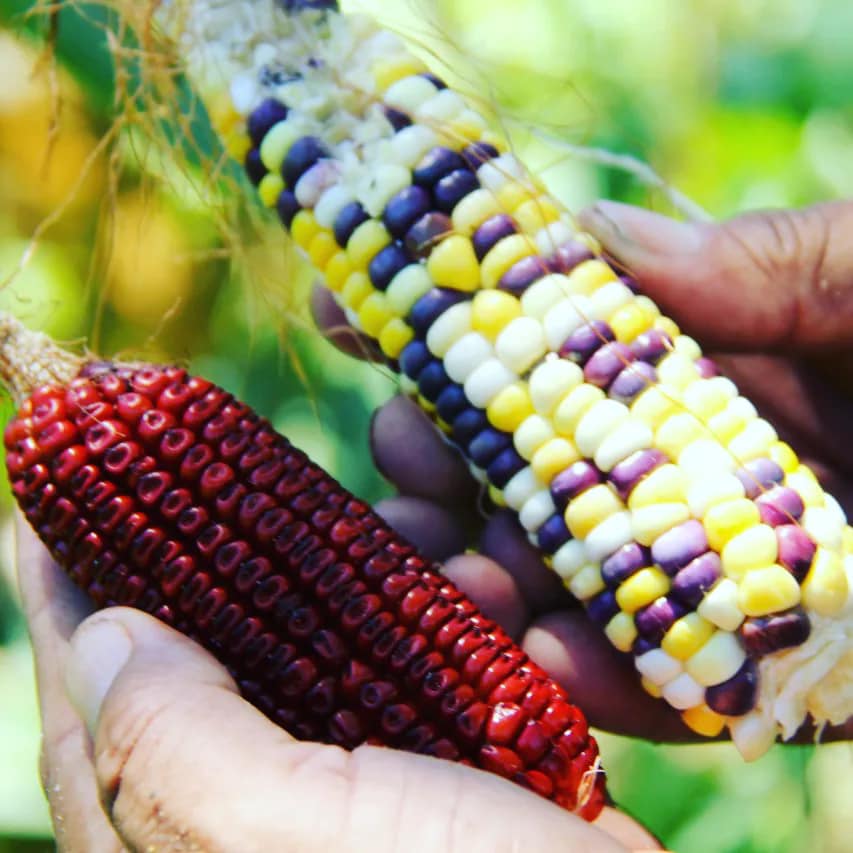
Traditional agricultural practices
Agroecology can be explained based on several scientific concepts. However, as Caianas communication advisor Neiriel Terena says, “agroforestry, in fact, is an ancestral Terena agriculture. We already practiced this agriculture in the old days”.
In fact, studies on the origin of agroecology point out that the science was developed and improved based on traditional agricultural practices of different people around the world. Formally, however, agroecology became known among the Terena in 2012, with the implementation of the Indigenous Environmental and Territorial Management Project (GATI Project).
The program, developed by the federal government in partnership with international organizations, is the result of the struggle of various indigenous leaders in Brazil, not just the Terena. The objective of the GATI Project is to promote the inclusion and strengthening of indigenous management practices, sustainable use and conservation of natural resources, and has helped several indigenous lands in the country since 2008.
When the GATI project was implemented in the Cachoeirinha IL, 34 families joined and started working with agroecology techniques. For the coordinator of Caianas, Arildo Cebalio, it was at that moment that the seed of the organization began to germinate: “since it was a government project, it had an end date, but we realized that it could not stop, it had to continue”.
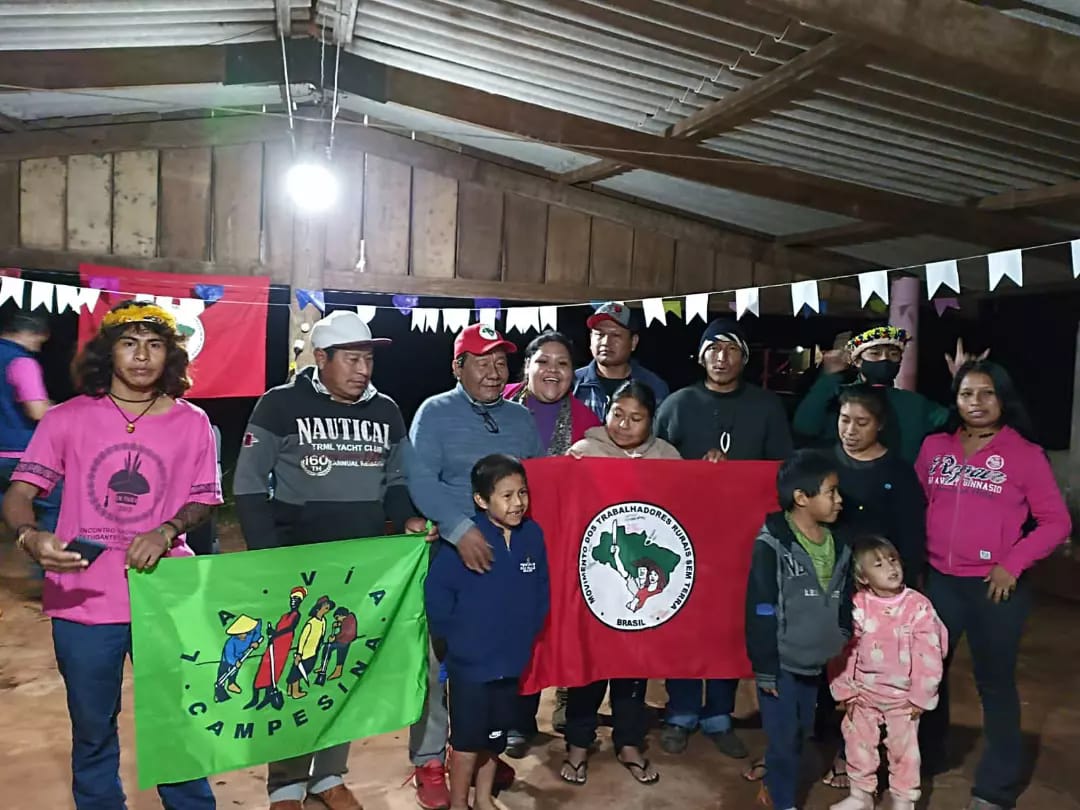

Rescuing agricultural and food culture, however, has not been a simple task. According to Arildo, there is a common notion that it is better to work as a labor force in the region’s farms and pay someone to plant some cassava and beans than to recover and work the area itself.
For him, the challenge lies in people’s understanding of what agroecology is and the economic possibilities linked to cultivation. He remembers having a “reality shock” when he attended the first agroecology workshop: “it was as if a veil had fallen, and I realized there that I could work and earn money from my own land”.
The difficult thing, he says, was convincing his wife. She, like so many other relatives, expected Arildo to go out to work. But now, after nearly 11 years, both are satisfied with the land’s transformation. “Today, she’s the one who helps and encourages me the most, so it was a long process, but it was worth it”, explains Arildo.
Action for nature
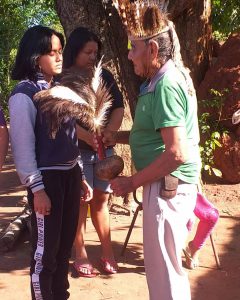

Kayanás represent the wise men and thinkers of the Terena people. The concept inspired the name of the Indigenous Environmentalist Action for Nature, Agroecology and Sustainability Collective – Caianas. The collective emerged in 2015, shortly before the GATI Project ended its activities at Indigenous Land Cachoeirinha.
Currently, the collective offers technical advice on agroecology to families in the IL Cachoeirinha, and other villages inside and outside the state. In addition to promoting ancestral agriculture, it also works with ethno-environmental education, collecting and protecting seeds and supporting other communities and indigenous groups with soil restoration and food security.
The organization held a workshop, for example, for the Guató indigenous people, considered the people of the Pantanal par excellence. In 2021, they were severely impacted by fires on their land and found themselves in a situation of social vulnerability. As Caiana’s project advisor, Valéria Surubi, recalls, “there was a drought in the rivers and they became thirsty”.
Faced with this situation, Caianas returned to do other activities that could generate income, such as the production of indigenous handicrafts. The expectation is that the Guató will regain their autonomy and be able to live without having to resort to assistance soon.
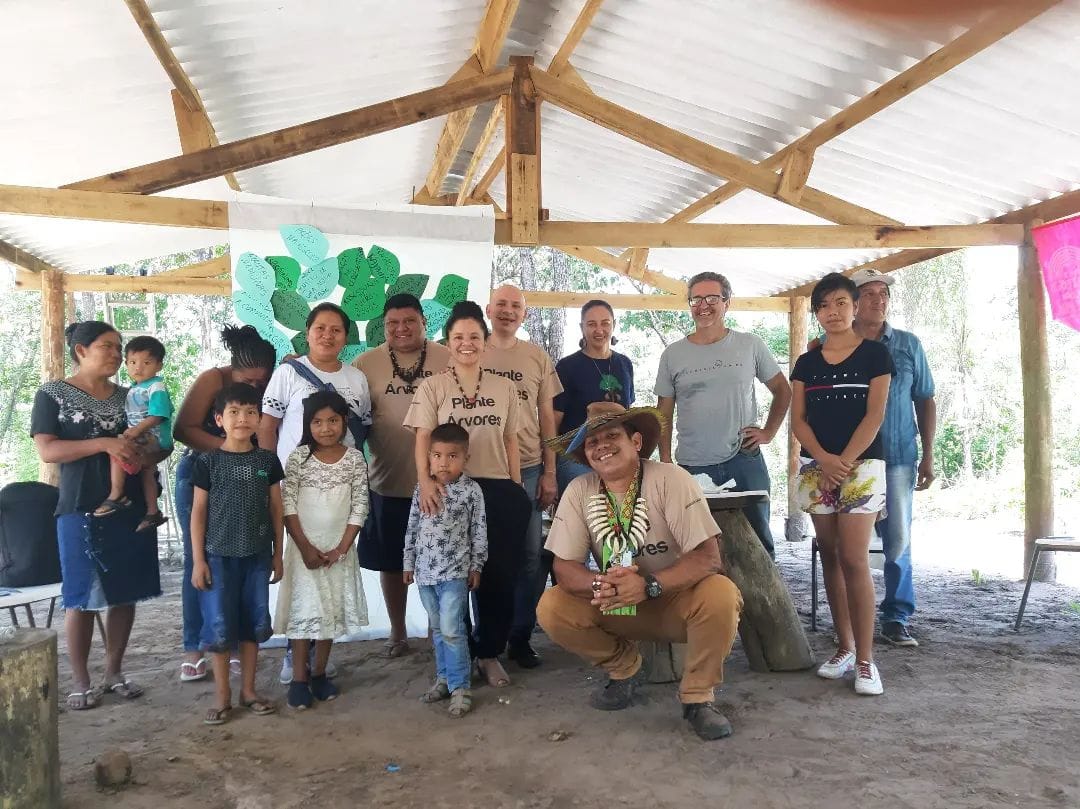

Earth cosmology
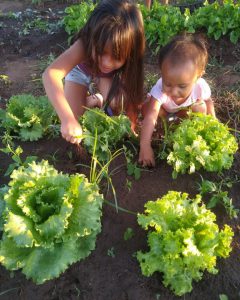

For the Terena, the concept of agroforestry came to remind them of their ancestral agriculture. Neiriel Terena says that when the families from the Cachoeirinha IL sat down to decide on the lines of action for Caianas, they quickly realized that the knowledge used in ecologically-based agriculture was the same as what they had already practiced in the past.
Terena agriculture, however, is not done only based on the planting of tree species and agricultural species, as advocated by the technical and scientific approach to agroforestry. For them, the planting of these plants must be associated with spirituality. Or, as Neiriel says, “to build an agroforest, we need to be well and converse with other beings”.
Thus, when Terena men and women farmers do the planting, or when they collect the seeds, there is a blessing process. “We bless so that other enchanted beings protect the seeds, so that from there they can have prosperous fruits”, explains Neiriel.
The blessing is carried out by the village elders, who are experts in pajelança and shamanism. They are the ones who teach the younger ones how the planting is done and also the dialogue that needs to be had with the enchanted beings.
We are the land
Since agroecology was implemented in the villages, it is estimated that 30 cassava varieties have been recovered, in addition to six types of beans. These varieties were identified with the ancients, explains Arildo.
According to him, the main struggle today is to make his own generation aware of the importance of this knowledge. And he cites the example of any tree: anyone who doesn’t know the tree will say it’s no good, he says. “But that doesn’t exist, if it grows, it’s because it has a purpose, sometimes we still don’t know, but it can have medicinal effects, craft functions, you can make a rope with the bark of the tree, in short, it will serve for something”, explains Arildo.
The same goes for medicinal plants. He remembers that he had a pharmacy in his land, but he didn’t know it, because he still didn’t know all the medicinal plants. For this reason, he says, he lacks words to explain the importance that Caianas is promoting with the rescue of this knowledge: “this is not only impacting us, indigenous people, but the whole society, non-indigenous people as well, because we are the land and we need to take care of her!”
When the Terena plant their fields, for example, they have to share the food they plant with wild animals, such as wild pigs, deer and many others, because they no longer have anything to eat in their natural habitat. “Even that is difficult, so we need to plant faster, we need to open more space so that our fauna can survive”, he warns.
Food autonomy
Orange, avocado, pineapple, okra, pumpkin, gherkin, cocoa… these and many other traditional foods of the Terena culture have been replaced by industrialized food in recent years. Many indigenous farmers usually sell their small family production of cassava and beans to buy ultra-processed foods in local supermarkets.
For this reason, says Jussara Leme, pedagogue and vice-coordinator of Caianas, it is always necessary to educate children and make parents aware of the benefits of traditional food. Healthy eating habits have been defended by Caianas in schools and in the agroecological production process of families.
Arildo, for example, remembers that he no longer eats many of the foods he used to: “I have other options, what I grow in my area offers me new alternatives for healthy foods”. For Valéria Surubi, the issue of food cost is central. The variety of food produced by families prevents them from buying food on the market, reducing food expenses.
She recalls that Caianas also maintains a cultivation project at the Mãe Terra school, guaranteeing school lunches for the children. “When there is a lot of food left over, parents can also pick it up and take it home,” explains Valéria. With that, she says, the project has strengthened a process of deconstruction of families that have not yet adhered to agroecological cultivation, because they have many doubts about its real possibilities.
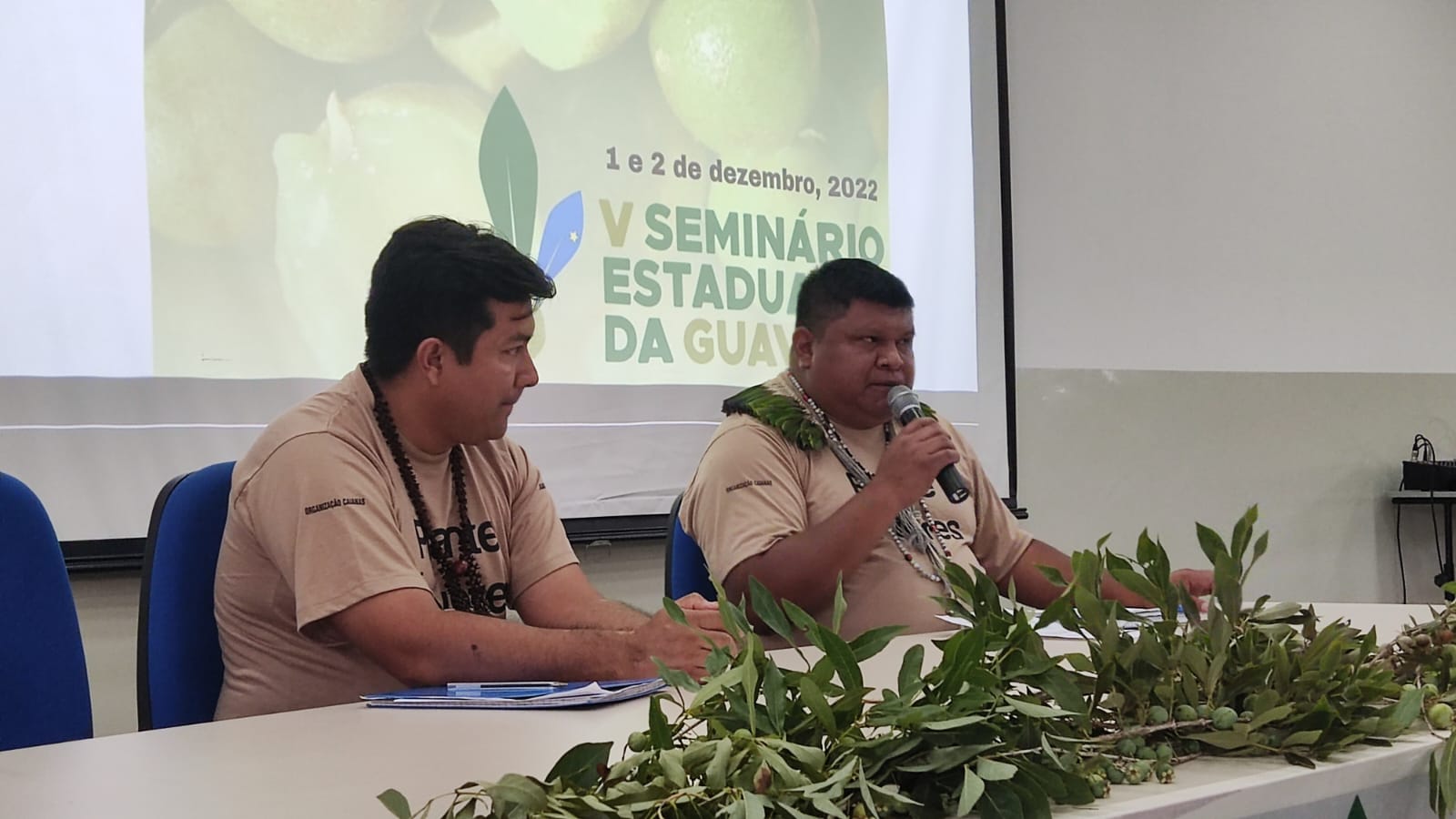

Collectivity
Many people voluntarily contribute to the development of Caianas projects. From technicians to professors and advisors, the organization has a series of professionals willing to donate their time for the common good.
The financial structure of the organization, however, is insufficient. To ensure funding for its activities, Caianas seeks funding mainly through public notices. According to the coordinators, however, access to notices is hampered by the bureaucracy and rigidity of public tenders.
In addition to public notices, Caianas also maintains partnerships with the State University of Mato Grosso do Sul (UEMS) and the Federal Technical Institute of Mato Grosso do Sul (IFMS). Volunteers, new partnerships and collaborations are always welcome, the coordinators inform.
Want to support this cause?
Visit the Caianas website.
Follow their social media accounts on Facebook and Instagram.
